You don’t have to be a wine connoisseur to know the difference between the various types of wine.
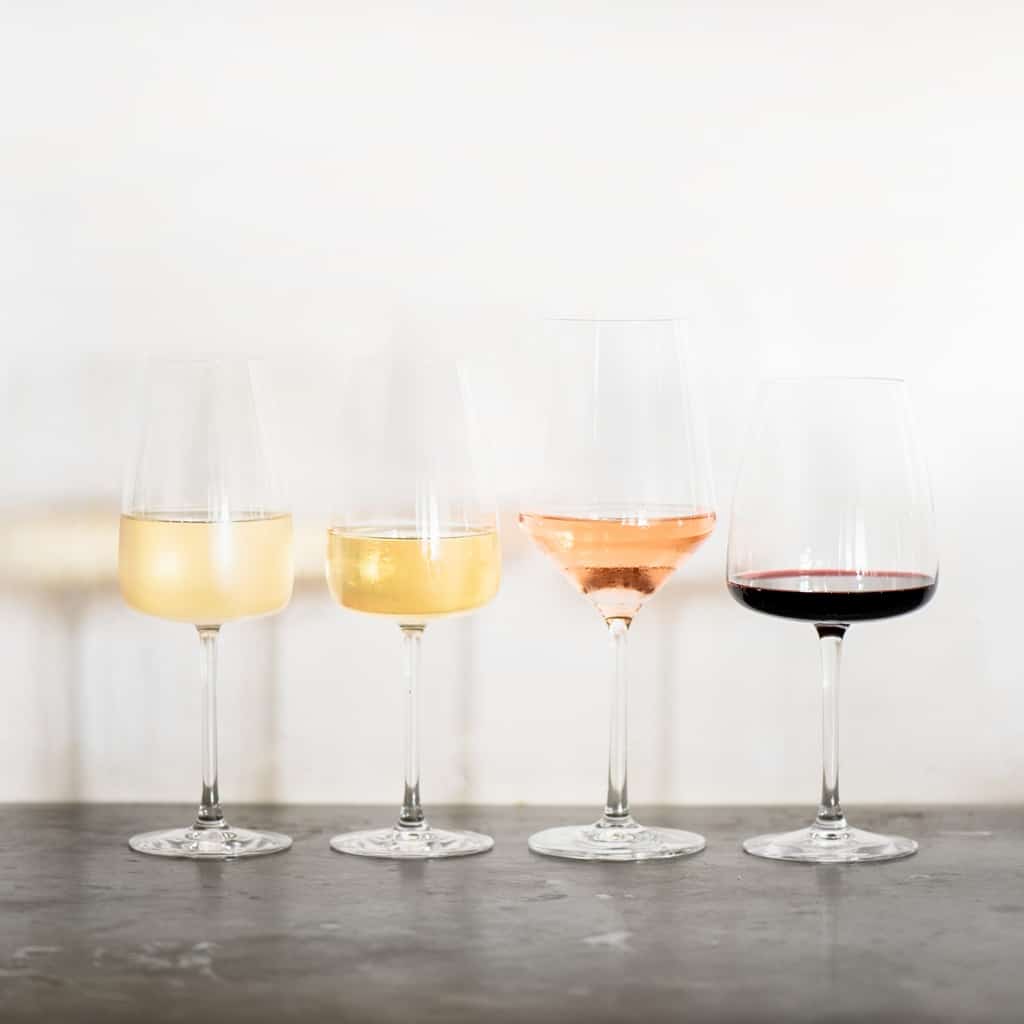
But if you are new to drinking wine, or you usually stick with one or two types and are looking to explore, you may wonder what the true differences are between different types of wine.
When it comes to the varieties of wine, each type has standout qualities, usually depending on the type of grape used in the process and other manufacturing specifications, such as sweetness, tannins, the region it comes from, etc.
This article will discuss the difference between popular wine types such as Merlot, Cabernet Sauvignon, Pinot Grigio, Pinot Noir, and more.
Plus, we’ll answer frequently asked questions that should help you when selecting, serving, and drinking your next bottle of wine.
Here is a quick recap of the different types of wine:
- Pinot Noir – Red
- Cabernet Sauvignon – Red
- Malbec – Red
- Merlot – Red
- Zinfandel – Red
- Pinot Grigio – White
- Riesling – White
- Chardonnay – White
- Sauvignon Blanc – White
- Rosé
- Sparkling
- Dessert
Read on to enter the vast world of wine and learn more details about the various types of wine below!
Different Types of Red Wine
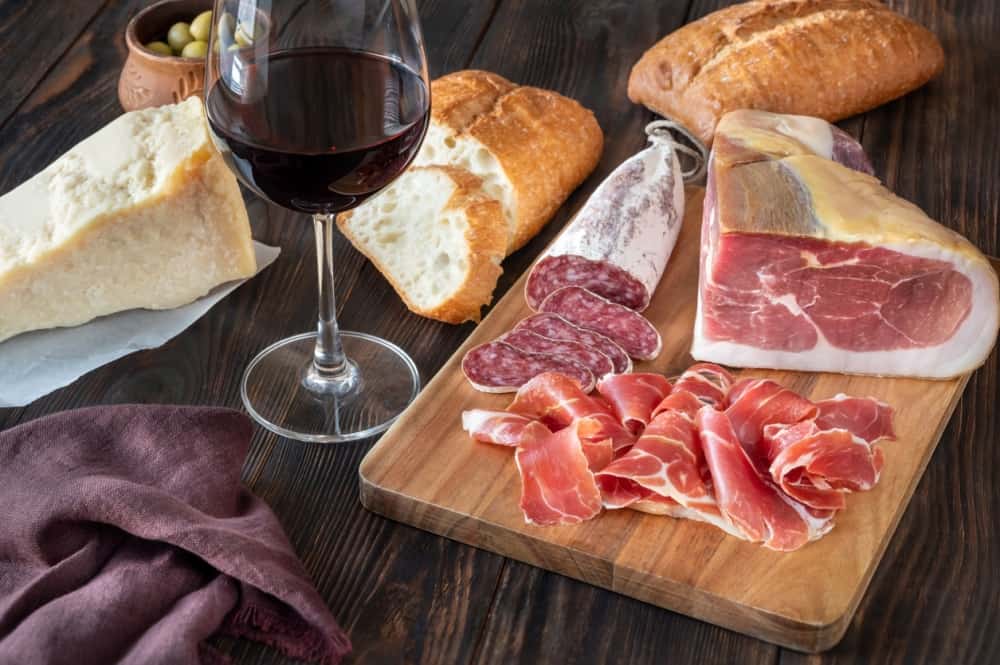
To create red wine, the juice of black grapes — which appear dark red — is fermented with its red-colored skins, in addition to the seeds and stems of the grapes.
Red wine typically has a higher level of tannins than white wine, which means it tends to be dryer and more bitter than white varieties.
Let’s get into the different types of red wine.
Pinot Noir
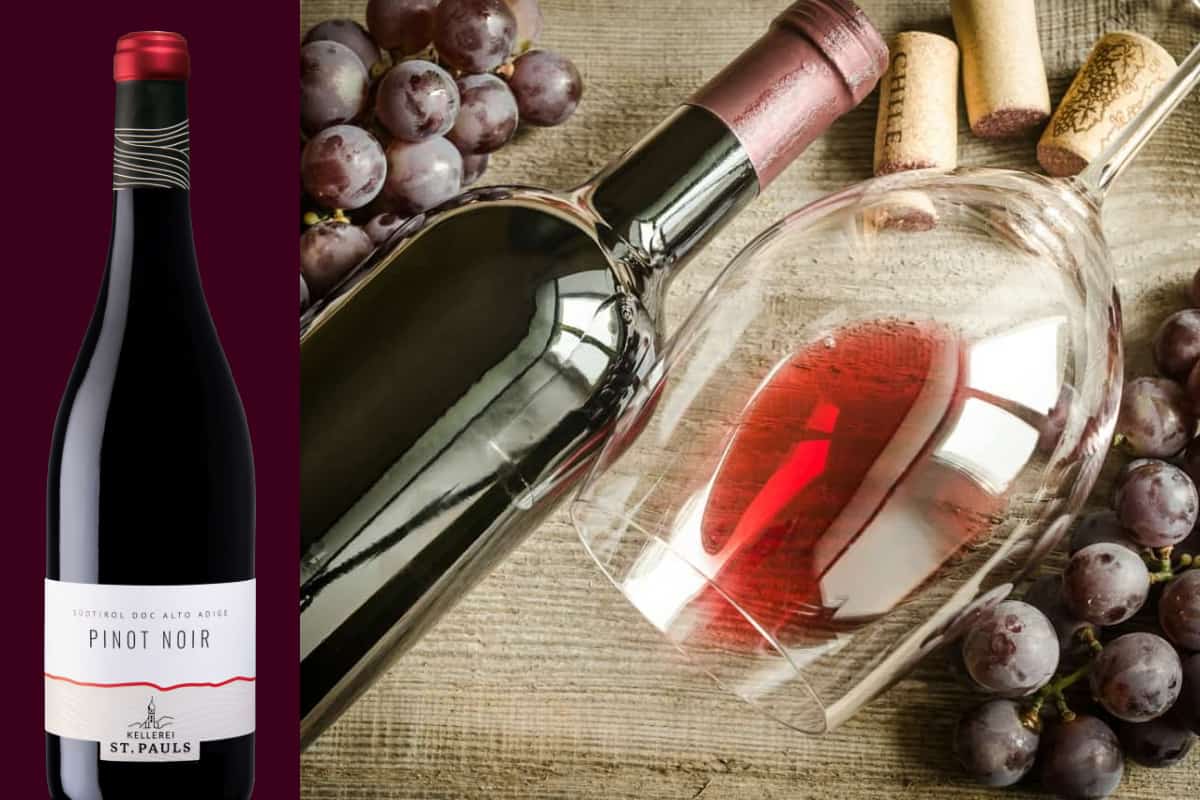
Pinot Noir is a smooth red wine that’s fruity but not too sweet. It’s usually made in colder climates. It results in a light to medium-bodied taste with spicy and earthy hints that compliment the red-fruit flavors. Pinot Noir wines tend to also have an aftertaste that lingers, so it’s best paired with other more potent, deeper flavors like garlic, beef, and bacon.
Although this Crock Pot Irish Stew would go great with Guinness, it would also pair exceptionally well with a bottle of Pinot Noir.
If you’d like to make a drink with this wine, you should check out this Hot Sangria Recipe! It can be done with several red wines, but it works best with Pinot Noir.
Cabernet Sauvignon
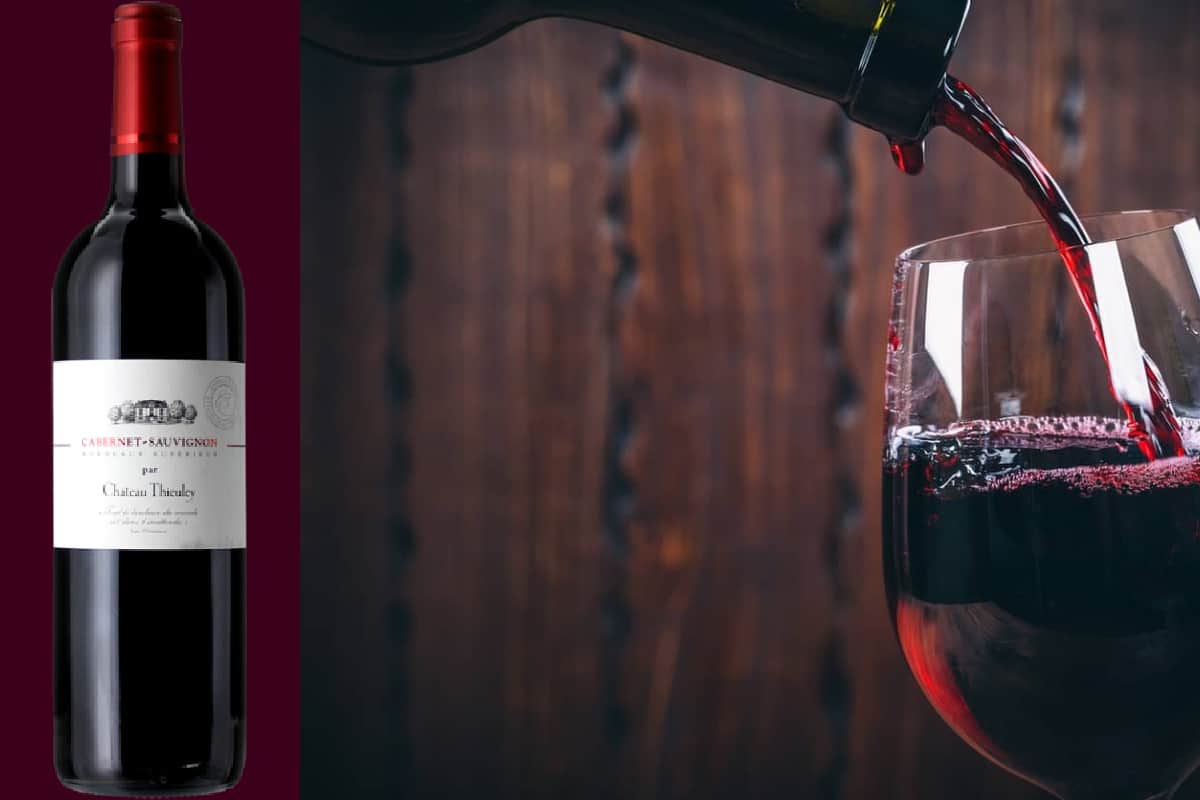
Cabernet Sauvignon is a full-bodied, highly flavorful, rich, and robust red wine. Usually, the aging process of this wine is carried out in French oak barrels, resulting in notes of vanilla, black cherry, and even green pepper.
This high acidity, spicy, and earthy wine will pair well with flavors like rosemary, mint, and mushrooms, so it’d go very well with a dish like Portobello Sandwich.
Malbec
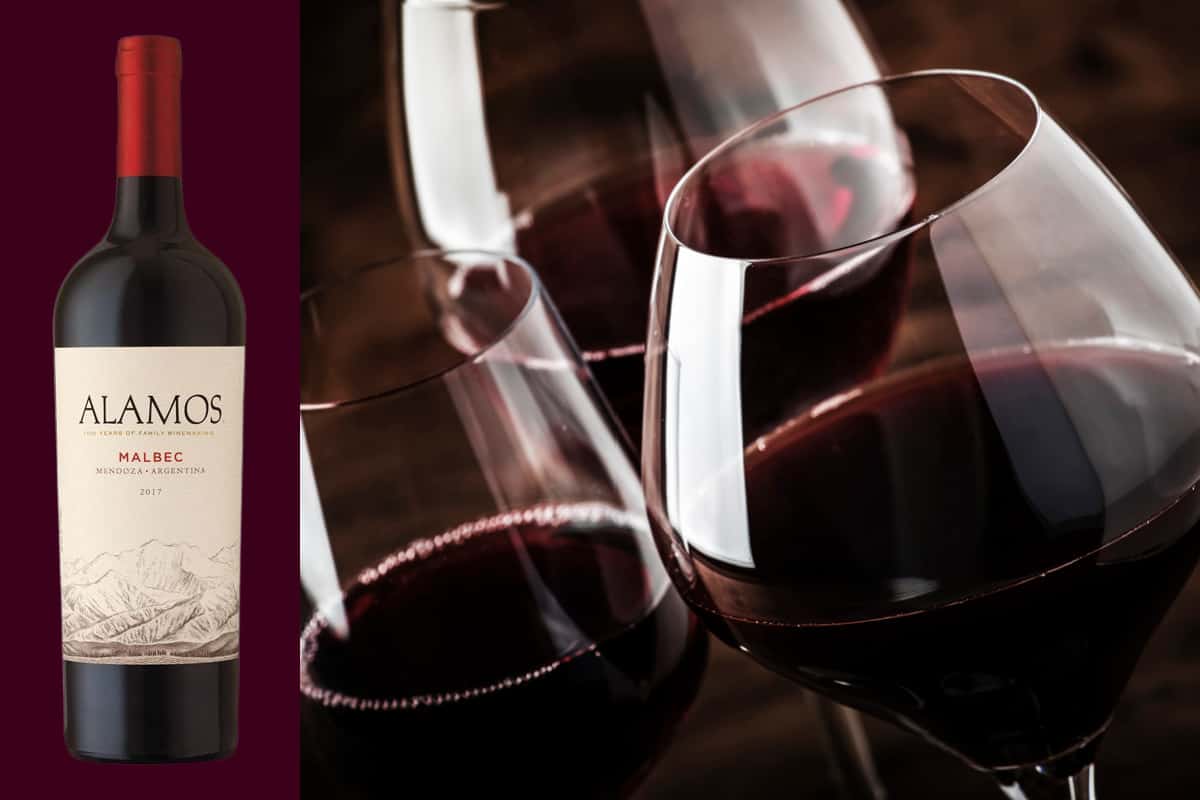
Malbec is a red wine with a deep, full-bodied, mature flavor with dark berry notes. Malbec lovers appreciate the smooth taste coupled with the varying fruity flavors that are potent but not too sweet.
Depending on the brand, you may discover notes of raspberry, pomegranate, black cherry, and plum.
Beyond the fruit, you may also find hints of tobacco, coffee, black pepper, and molasses, which are responsible for the more developed overall flavor.
Because of this depth of flavor, Malbec pairs well with dishes that are a bit sweeter and tangier, like this Grilled Beef Teriyaki dish.
Merlot
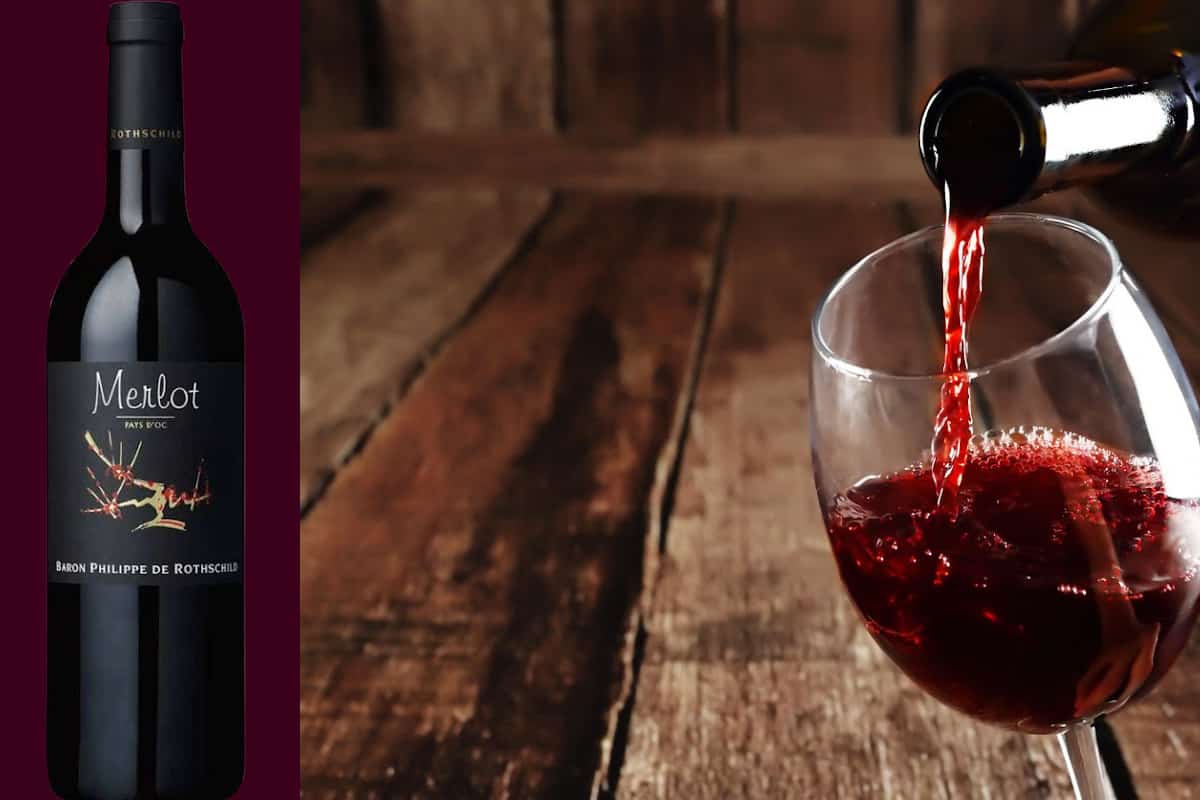
Merlot is similar to Cabernet Sauvignon but much fruitier and a little sweeter. However, it is not too sweet and is still a dry wine. It’s a complex red wine, with sweet notes like vanilla and mocha, fruity notes like black cherry, plum, and raspberry, and some spicy notes, as well.
Merlot pairs very well with various cheeses like cheddar, gorgonzola, and blue cheese. For example, this Andouille Sausage with Blue Cheese would work perfectly with a glass of Merlot.
Zinfandel
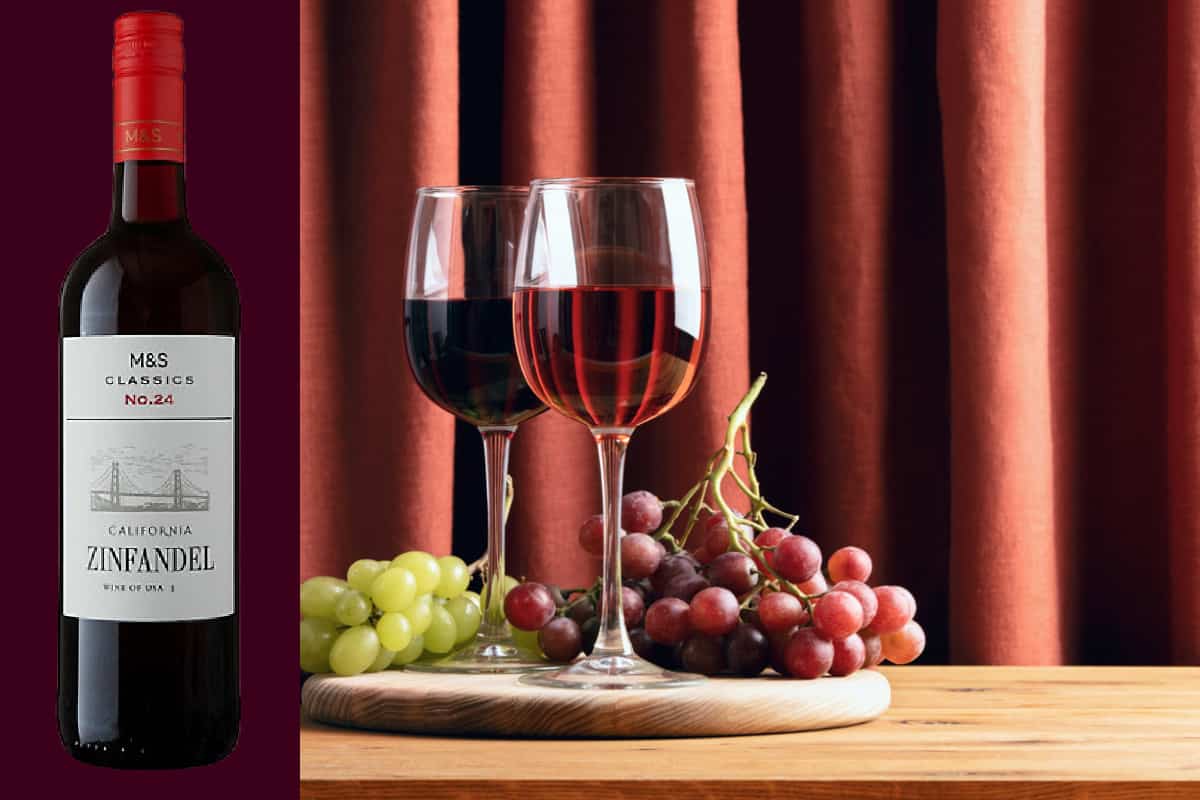
Although many wine grapes can be found globally, the wine grapes responsible for Zinfandel are grown exclusively in California and aged in American oak.
It is a rich wine and may have more alcohol content than its counterparts. It is also a very versatile wine in terms of flavor pairings; thus, it can go well with a range of items such as meats, cheeses, spices, and veggies.
However, Zinfandel tends to go incredibly well with grilled meat dishes, like these Fusion Grilled Steak Tacos.
Different Types of White Wine
It is common to assume that white wine can only be made from white grapes, but it is typically made from both white and black grapes.
The main difference between making white wine versus red wine is that white wine is not fermented with grape skins like red wine is.
The skins are removed from the process after juicing, so no red coloring tints the final wine.
Additionally, white wines are more acidic than red wines, which leads to their more tart and crisp tastes.
Here are some of the popular types of white wine.
Pinot Grigio
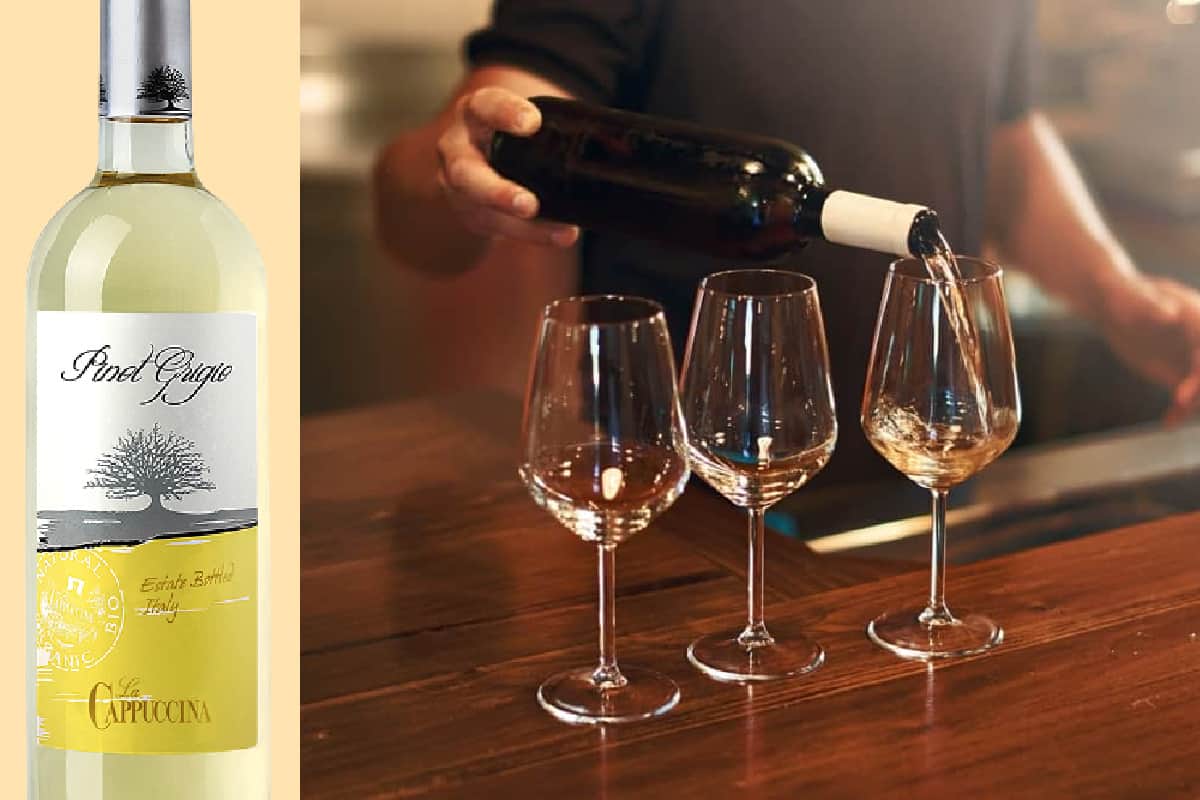
Pinot Grigio is a highly famous type of Italian white wine. It is particularly refreshing and crisp, perfect for drinking cold on a warm summer day due to its light, dry, and fruity flavors.
It’s a sweeter wine but not so sweet that it’ll make you pucker, as notes of honey and its general high acidity help balance out the taste.
The fruit notes of honeysuckle, pear, green apple, and lime pair well with buttery seafood like lobster, crab, and shrimp.
Pinot Grigio is one of the best white wines to use to make White Sangria.
Riesling
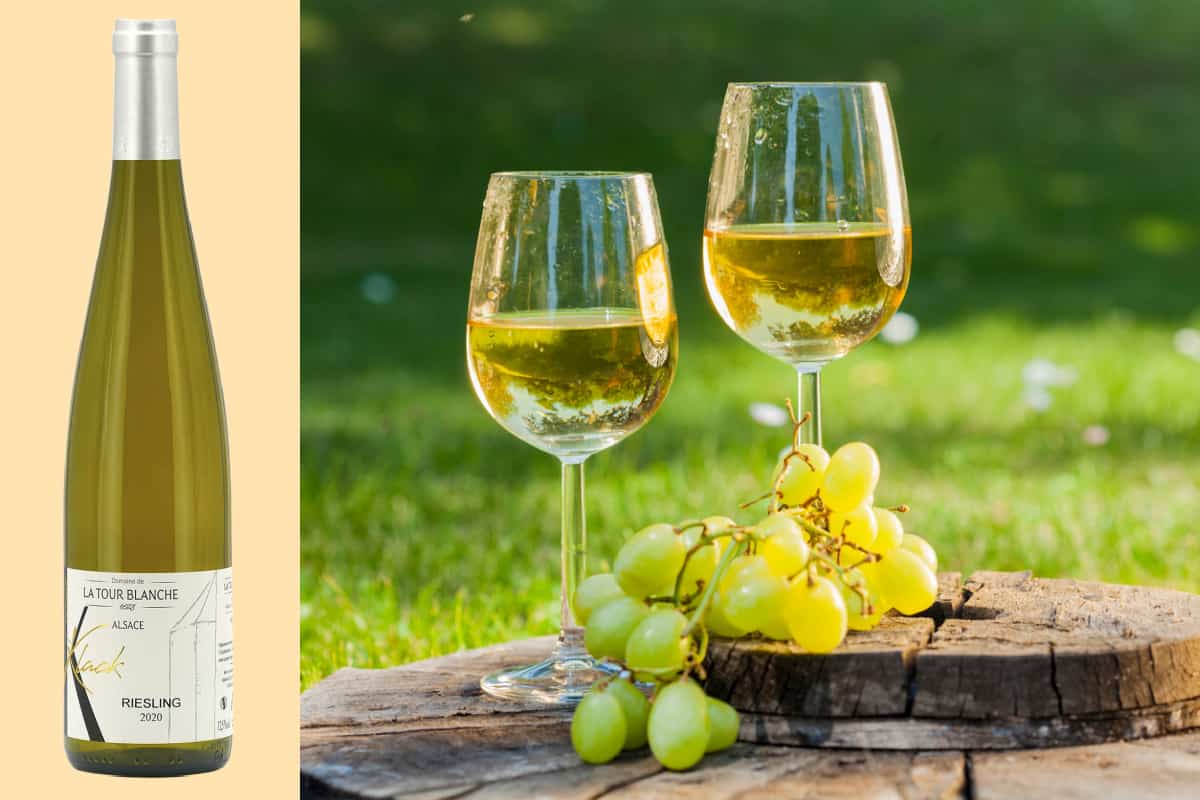
Riesling is a German wine that is rarely oaked for aging, thus emphasizing its natural fruity flavors such as apricot, pear, peach, and apple.
Like Pinot Grigio, Riesling starts a bit on the sweeter side but has a honey flavor that balances out the taste towards the end.
Plus, this wine is one of the more aromatic wines, with both fruity and floral aromas.
The sweetness of this wine pairs well with spicier food, so eating it with a dish like Spicy Pumpkin Pasta would make a delicious, sweet, and spicy meal altogether.
Chardonnay
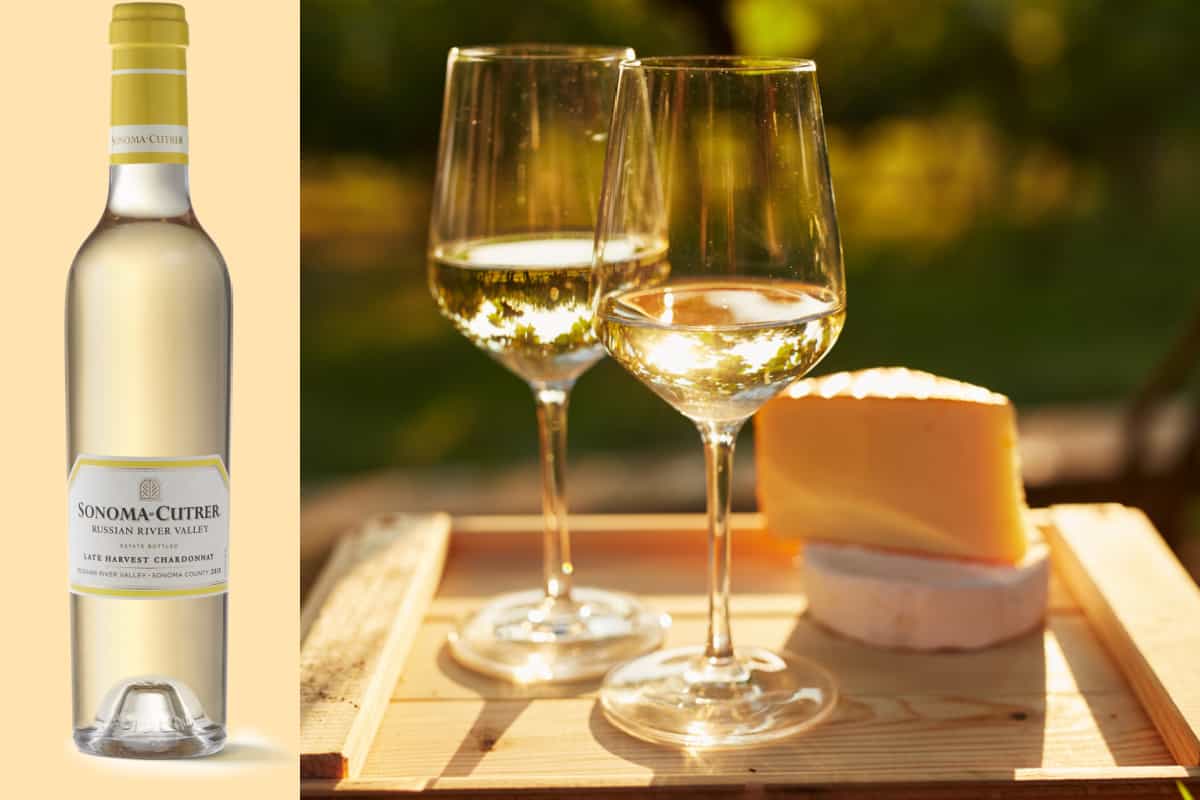
Chardonnay is unsurprisingly the most popular white wine in the world.
This truth could be due to the fact that it’s grown globally, or maybe simply because it is the epitome of a refreshing, crisp, full-bodied, and dry white wine.
High-quality Chardonnay is aged in oak barrels, resulting in a dynamic flavor that includes fruity and spicy notes, as well as a buttery and smooth feel. The fruity notes are typically more tropical in nature, such as pineapple, mango, and papaya.
Given its overall creamy profile, it pairs well with texturally creamy dishes with bold flavors, such as this Cajun Shrimp Mac and Cheese.
Sauvignon Blanc
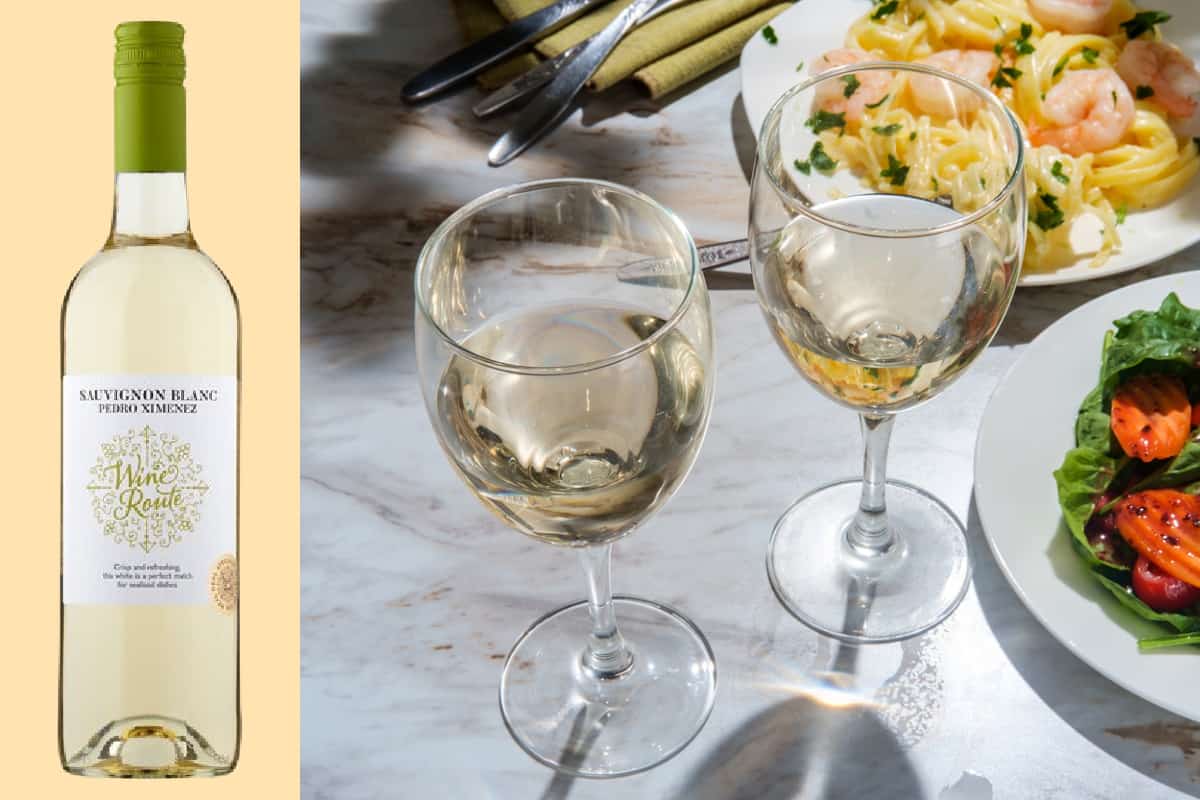
Sauvignon Blanc is similar to Chardonnay in that it is a light, dry, and crisp wine. It is also similarly aged in oak, which creates spice and vanilla notes.
However, there is a more earthy, grassy undertone to Sauvignon Blanc, and its fruity notes are on the more citrusy side — lime, grapefruit, peach, etc.
Sauvignon pairs well with chicken dishes and, like Chardonnay, complements creamy dishes, so this Creamy Baked Chicken meal would be the perfect fit.
Moscato
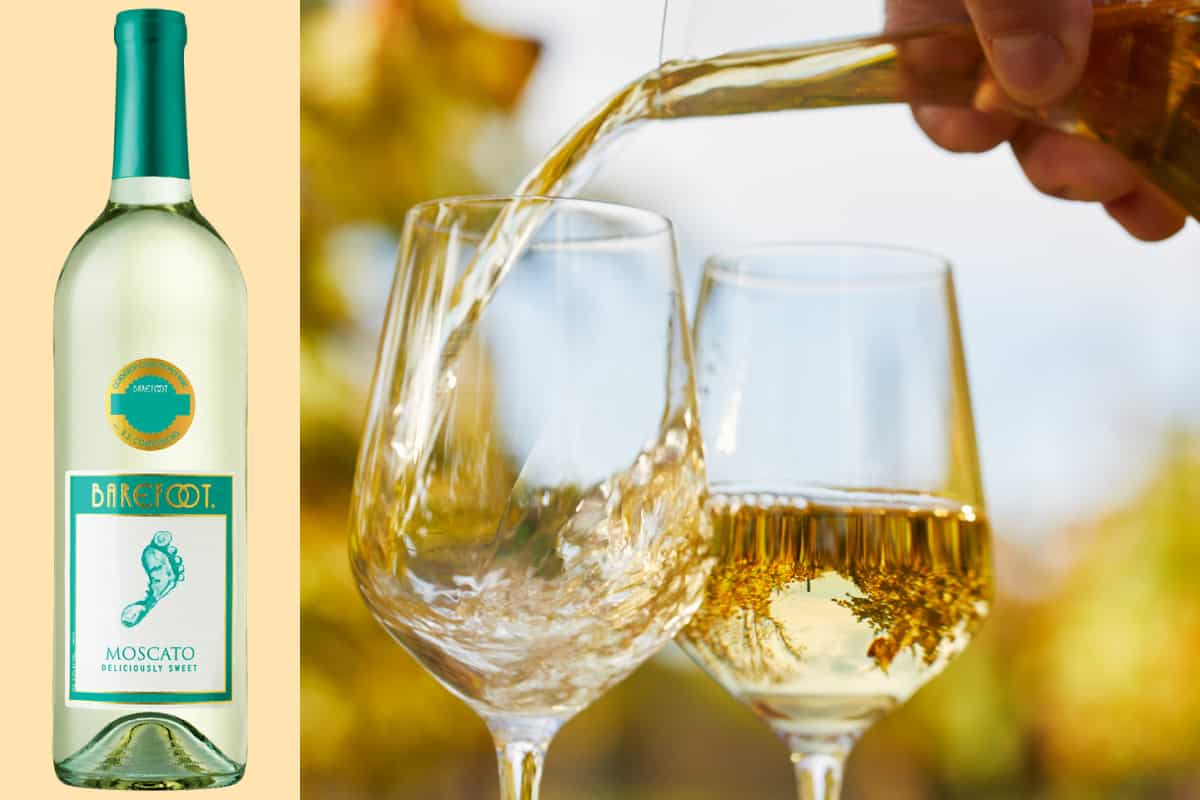
Moscato is a sweet white wine, sometimes seen as a standard drink or a dessert wine — depending on the drinker’s preference.
It has similar fruit notes as some of the other white wines, such as peach and apricot, but has more residual sugar and less acidity, making it sweeter than many white wines overall.
Because of this sweetness, Moscato pairs well with dishes using lots of spices, such as ginger, saffron, and turmeric. It would go excellently with this Sesame Ginger Chicken dish, especially if you add red pepper flakes to the top.
Other Types of Wine
The following wines have fewer varieties among them but are just as important in a discussion about wine.
Rosé
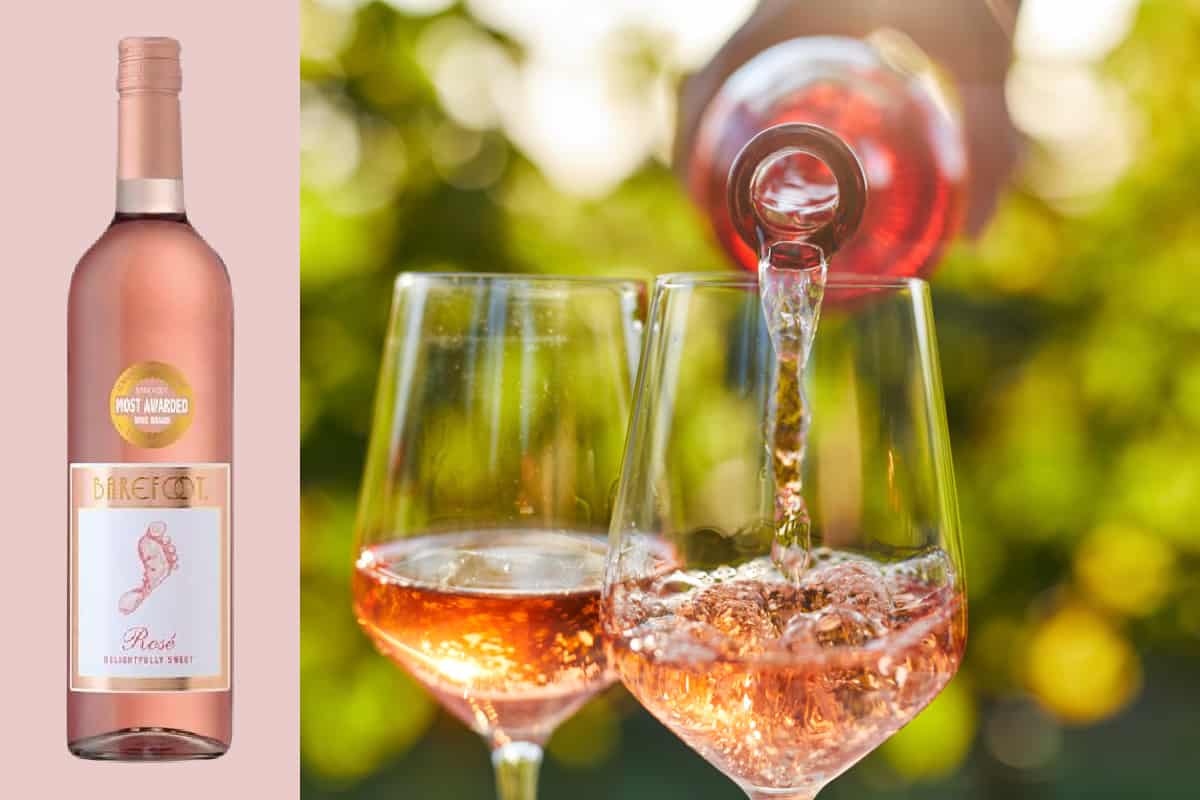
Rosé is made similarly to red wine but is not classified as red wine. It is made from red grapes, like red wine is, but has a quicker fermentation time with the skins of the grapes, resulting in a lighter, pinker color than red wine.
Rosé tends to pair well with light, snack-like dishes like dips, such as this Vegan Spinach Artichoke Dip.
Check out the recipe for this Rose Sparkling Wine Float! It’s perfect for a girls’ weekend or any type of cheery celebration.
Sparkling Wine

Sparkling wine, sometimes lightheartedly referred to as “bubbly,” is carbonated wine. It uses both black and white grapes, and given the carbonation, it pairs best with lighter foods like soft cheese, salad, and salmon. Champagne is a popular sparkling white wine and would go splendidly with this Bourbon Glazed Salmon Salad.
Moscato isn’t the only wine that can spruce up a Moscow mule. Try this Champagne Moscow Mule and see what we mean.
Dessert and Fortified Wines
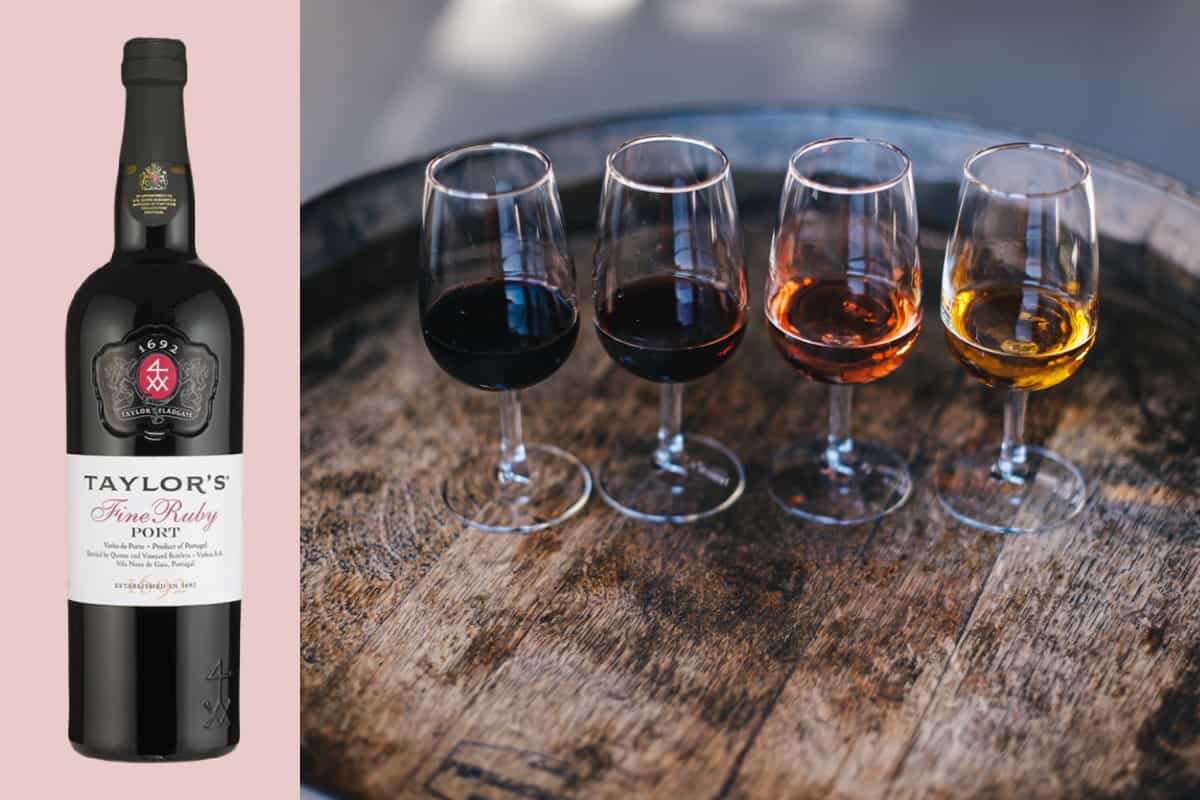
Dessert wines, like Moscato, are simply what people call sweet wines that are best saved for dessert.
Fortified wines, like Port wine, have been “fortified” with spirits, such as brandy, during their fermentation process, resulting in a sweeter flavor, as well.
Both of these types of wine go well with cheese, fruit, and baked desserts like tarts and cakes.
You truly can’t go wrong with a dessert wine paired with a dessert such as Strawberries and Cream Profiteroles.
Conclusion
Various types of wine can fit different people’s flavors, appearance, and pairing preferences.
So, if you have tried one type of wine, say white wine, and think you don’t like wine, you might actually prefer red wine instead, or vice versa.
Or, if you hate the taste of sweet wine like Moscato, there’s no need to rule out all white wine, as there are plenty of dry varieties to choose from.
Wine is versatile when it comes to food pairings, too. Whether it’s a meat dish, a seafood item, a vegetable medley, a fruit salad, a savory snack, or a baked sweet, there is a type of wine that will surely go well with it.
Hopefully, this article has opened your eyes to the world of wine or given you a reason to become more explorative and experimental.
FAQ
Here are answers to commonly asked questions regarding wine.
What Type of White Wine Is Dry?
White wine that includes little to no residual sugar is a dry white wine. Sauvignon Blanc, Chardonnay, and Pinot Grigio are all dry white wines.
Some white wines, like Riesling, can be made either sweet or dry. And even the dry versions may seem a little sweet, depending on your tastes.
What Type of Wine for Sangria?
Traditional sangria uses red wine, especially light to medium-bodied red wines that don’t overwhelm the drink but instead emphasize the fruity flavors added to the mixture.
Good red wines for sangria include Pinot Noir, Malbec, and Zinfandel.
However, many people enjoy the lighter, softer flavors of white sangria, which uses white wines like Pinot Grigio, Sauvignon Blanc, and Moscato for a sweeter drink.
What Type of Wine Is Moscato?
Moscato is a sweet white wine, and due to its low acidity and high concentration of residual sugar, it is often seen as a dessert wine, as well.
This is why people tend to drink Moscato after dinner, only imbibing in one or two glasses.
What Type of White Wine Is Good for Cooking?
You can use both red and white wines for cooking, but it depends on the type of dish you are making and what flavor profile you are going for.
In general, the most commonly used wines for cooking are white wines, namely crisp varieties like Sauvignon Blanc and Pinot Grigio.
Red wines may come into play with savory, salty meat dishes, with oaky Cabernet Sauvignon supporting beef and lamb dishes, Merlot helping out with chicken and pork, and Pinot Noir bringing out the flavors of seafood.
How Many Calories Are in a Glass of White Wine?
A standard, five fluid ounce glass of white wine typically contains around 120 calories. Red wine is about the same, at 125 calories.
How Long Is White Wine Good for After Opening?
How long a white wine will stay good after opening depends on the specific type of wine as well as how the user stores it.
If stored in the fridge after opening, most white wines will stay tasty for up to two to three days.
How Many Carbs Are in a Glass of Red Wine?
One 5-ounce serving of red wine contains 3.8 grams of carbs. There is some variance between the specific types of wines. For example,
White wine contains around the same amount of carbs as well.
What Is a Sweet Red Wine?
When people think about sweet wine, white wine often comes to mind. However, there are sweet red wines such as Zinfandel and dessert red fortified wines like Port wine.
Other sweet red wines include but are not limited to Madeira and Marsala. Plus, there are many specialty wines that blend dry red wine with sweet notes with an emphasis on flavors like cherry, vanilla, and chocolate.
Is Red Wine Gluten-Free?
The process of creating and fermenting red wine is completely gluten-free.
However, after fermentation, some wines go through a process called fining that adds substances to help clarify the wine, and gluten contaminants may enter the wine through this process.
If you are on a gluten-free diet for any reason, make sure to check that the brand you are buying is a gluten-free wine brand.
Leave a Reply